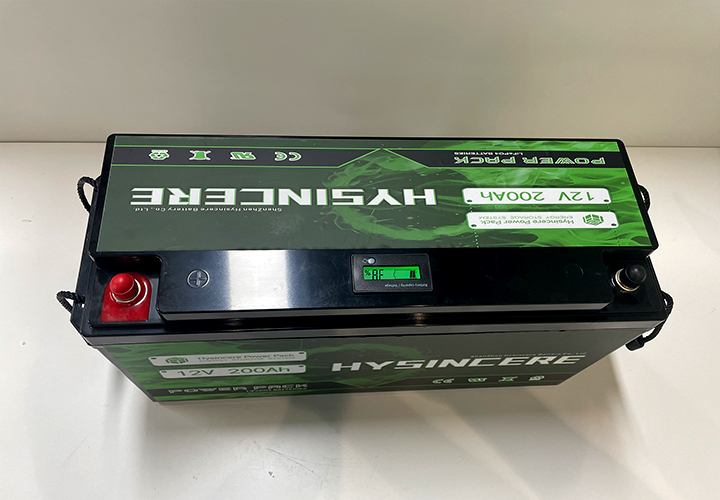source:other news
release time:2023-10-09
Hits:0
Popular:

Energy storage battery technology can be divided into energy storage battery body technology and energy storage battery application technology. How to correctly understand and understand the current energy storage technology,
Based on the current development of energy storage batteries, energy storage technology can be roughly divided into four categories based on the energy form used; Physical energy storage (pumped storage, compressed air energy storage, flywheel energy storage, superconducting energy storage), electrochemical energy storage (various secondary batteries, electrochemical supercapacitors), chemical energy storage (chemical reaction energy storage such as artificial clean energy such as hydrogen and carbon storage), heat/cold storage (sensible heat storage, phase change energy storage, chemical reaction heat storage). Energy storage batteries belong to the category of electrochemical energy storage and are currently the most rapidly developing type of energy storage technology.
However, not all batteries can be referred to as energy storage batteries. Batteries with a system power of over 1KW and used in electric vehicles and communication base stations can be referred to as energy storage batteries; The battery used for energy storage power stations with a system power of ≥ 1MW is called an electric energy storage battery.
The application technology of energy storage lithium batteries mainly refers to BMS (battery management system), PCS (battery energy storage system energy control device), and EMS (energy management system). BMS is the link between the battery body and the application end, mainly targeting secondary batteries, with the aim of improving battery utilization and preventing overcharging and excessive discharge of the battery. PCS is a system that is paired with energy storage battery packs and connected between the battery pack and the power grid, storing or feeding back the energy of the battery pack to the power grid. EMS is the general term for modern power grid dispatch automation systems, including computers, operating systems, EMS support systems, data acquisition and monitoring, automatic power generation control and planning, and network application analysis.
Firstly, develop energy storage battery technologies that are demand oriented and tailored to the actual needs of different application fields; Low cost, long lifespan, high safety, and easy recycling are the overall goals for the development of energy storage battery technology.
Energy storage can play an important role in many aspects, such as peak shaving and frequency regulation of the power grid, smoothing fluctuations in renewable energy generation, improving distribution quality and reliability, backup power sources for base stations, communities or households, distributed microgrid energy storage, and energy supply systems in the VEG mode of electric vehicles. The scenarios and technical requirements of energy storage applications vary, and no type of battery can meet the requirements of all scenarios. Therefore, it is necessary to be demand oriented and develop energy storage battery technologies that are suitable for the actual needs of different application fields.
Although the current business model of utilizing the peak valley electricity price difference to develop energy storage is highly concerned, it may be a false proposition that is feasible in the short term but not in the long run. The reason is that as the cost of energy storage technology decreases, the peak valley electricity price difference of the power grid will become lower and lower. Only when the energy storage cost is lower than the peak shaving cost of thermal power in the future can energy storage equipment be included as an important supplement in the power grid dispatch system
Read recommendations:
Low Temperature Lithium Battery 26650 Cell
Lithium battery recycling technology is immature.portable power station solar

Last article:Explanation of the characteristics of lithium power batteries
Next article:Consistency issues with lithium batteries.best solar powered generator
related suggestion
lithium golf cart batteries price
2023-03-22lifepo4 24v wholesale
2023-04-07lithium batteries for solar panels price
2023-04-07lithium ion golf cart batteries wholesaler
2023-04-07lithium batteries for boats company
2023-04-07lithium batteries for solar panels price
2023-03-22trolling motor battery
2023-05-08home solar battery system
2023-05-08solar backup generator
2023-05-08lithium trolling motor battery
2023-05-08lifepo4 12v
2023-05-08best portable power station
2023-05-0848V 51.2V 105Ah Golf Cart LiFePo4 Battery 100Ah 6000 Cycles IP67 Waterproof with RS485 CAN
2025-02-27Golf Cart 51.2V 105Ah LiFePo4 Battery Pack IP67 Waterproof with Bluetooth
2022-09-293kw solar portable power station 110v 220v 3000w inverter lifepo4 battery fast charging ups convenient with wheels
2023-04-1251.2V 100Ah Household Energy Storage System Wall Mount Home Battery Pack
2022-10-19Hysincere 500W Portable Power Station Solar Powered
2022-09-09The reason lithium-ion batteries are really green
2022-10-11Do you know how much cold resistance lithium batteries are custom-made for?portable solar power station
2023-08-16Building Reliable 18650 DIY Battery Packs for Industrial and Commercial Applications
2025-07-09Protected vs Unprotected 18650 Batteries: What Customers Need to Know
2025-05-21Choosing the Right 12 Volt Battery for Your Electric Scooter
2025-03-14Lithium -ion battery self -discharge and SOC matching
2023-02-16Prosperity of solar lithium battery
2023-02-25The difference between lead -acid batteries and lithium ion batteries.36 volt golf cart batteries
2023-06-06What are the components of lithium batteries analyzed?deep cycle trolling motor battery
2023-06-20What are the precautions for using 48V lithium battery?
2022-11-11